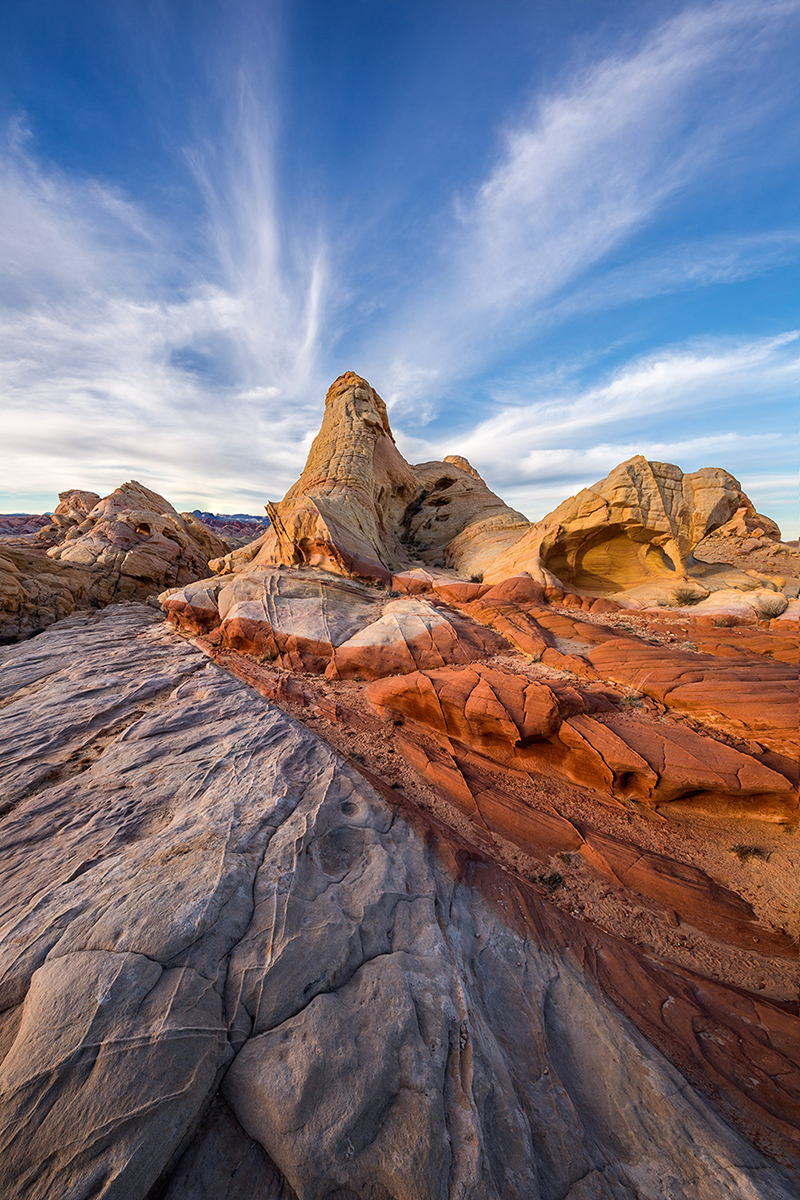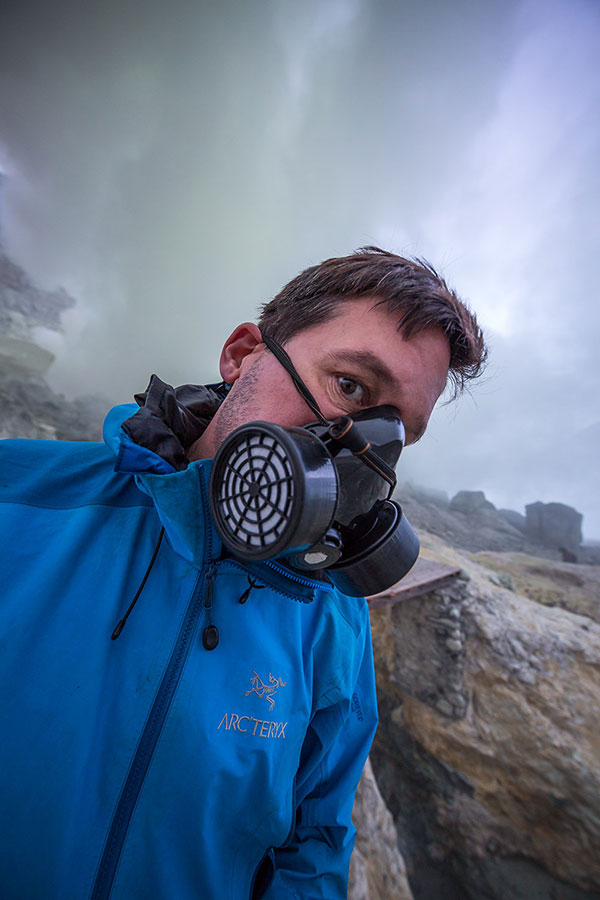Valley of Fire is Nevada’s oldest and largest state park, named for the park’s extensive red sandstone formations. Despite being less than an hour’s drive away from Las Vegas, Valley of Fire seems to be from a completely different world. Over 150 million years old, the ancient rock has withstood eons of uplifting, faulting, and extensive erosion, creating a fairyland multi-colored landscape of deep canyons, domed sandstone mounds, and hundreds of small natural arches.
There’s almost no end to the photographic possibilities here. I’ve found opportunities ranging from ultra-wide to telephoto. For the image below, I zoomed in with a short telephoto to capture fading light and deep shadows on distant sandstone formations. I choose a composition that focused on a repetition of shapes, creating multiple layers of visual interest.
Most landscape scenes don’t come fully to life without clouds, and Valley of Fire is no exception. While photographing a colorful pattern in sandstone one morning, the first light of day painted the clouds in pinks and purples. The soft, colorful light fully revealed the colors of the sandstone, which would have been obscured in the harsh light of midday.
On my most recent trip to Valley of Fire, I was lucky to arrive during heavy rains. Although my first day there was cloudy and wet – not exactly good shooting conditions for this landscape – flash floods coursed through the park’s ravines and canyons, sculpting the mud and leaving behind plenty of reflecting pools. I got inches away from the mud for this image below in order to bring the reflection down into the puddle of water covered in a thin layer of ice. I used focus stacking (blending multiple exposures at different focus points in Adobe Photoshop) to ensure near to far focus. The next morning, the water had drained from this pool, and the mud had been trampled by passing hikers. I’m glad I found it when I did!
Every time I go to Valley of Fire, I find new formations and compositions. This final image is one of my favorites from several years ago, during one of my first visits to the park. The colors and features of the sandstone found here are simply amazing, creating a seemingly infinite variety of opportunities for the creative photographer. I can’t wait to visit this incredible place again!
To see more of my Valley of Fire photos, visit my website: Dreamscapes – Valley of Fire
About the author: World-renowned professional photographer and Tamron Image Master Ian Plant is a frequent contributor to several leading photo magazines and the author of numerous books and instructional videos. You can see more of Ian’s work at www.ianplant.com.
Have something to add to the story? Leave a comment or email editor@outdoorphotographyguide.com.






Absolutely stunning captures!
What area of the valley were you at because I was there two years ago an don't remember see these scenes ? They are amazing!
Never saw such beauty before. Did you use a tripod on all those shots? When is the best time of year to visit "Valley of Fire"?
Never saw such beauty before. Dis you use a tripod on all those shots? When is the best time of year to visit "Valley of Fire"?
Beautiful images. I'm curious about the Nikon lens. What kind of adapter are you using? Canon 5DII, Nikon 14-24mm f/2.8 lens with Canon adapter, ISO 100, f/11, 2 seconds.